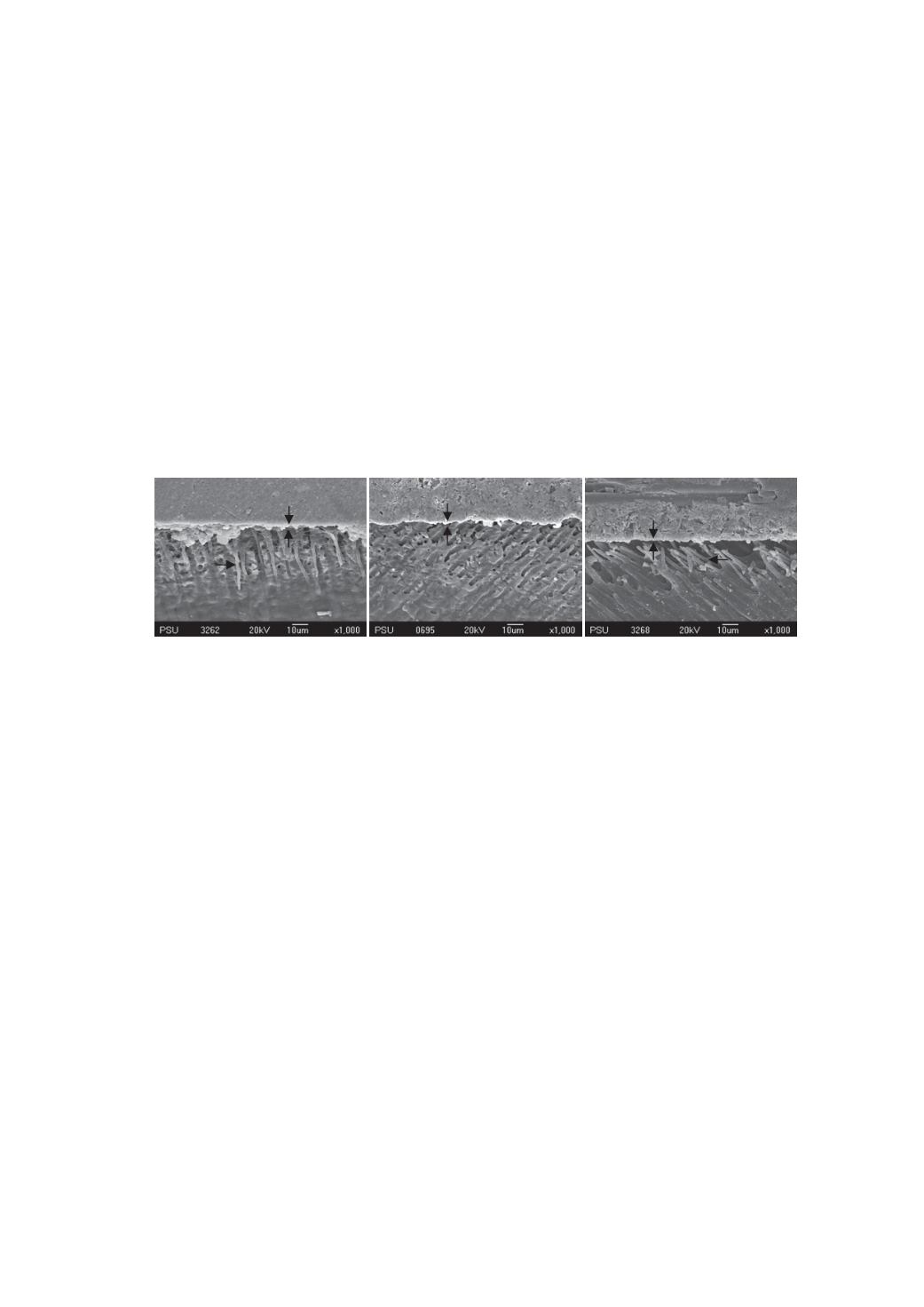
µ¦¦³»
¤ª·
µµ¦Â¨³Á°¨µª·
´
¥¤®µª·
¥µ¨´
¥´
¬·
¦´Ê
¸É
19
¦³Î
µe
2552
The three luting agents provided good adaptation to the canal wall with similar hybrid layer formation (figure 1).
Resin tags were not often found when Panavia F 2.0 was used, but they were found in the Variolink II group,
where the dentinal tubule was opened by the etching procedure. Surprisingly, some resin tag formations were
found in RelyX Unicem, even though the etching capacity was expected to be inferior because there was no
pretreatment of the dentinal surface before bonding. The representation of resin tags in SEM micrographs
indicated that RelyX Unicem might have strong acidity, having enough to dissolve smear layers and penetrate into
dentinal tubules. The manufacturer claims that RelyX Unicem has typical monomers containing at least two
phosphoric acid groups and a minimum of two double bonded carbon units (C=C) per molecule which provide
enough acidity of pH 2.1 to function simultaneously both in demineralization of the tooth surface and penetration
of the cement into the demineralized surface.
Figure 1. Representative SEM photomicrographs showing the fiber post-luting resin-dentin interfaces obtained
from each luting agent.
A
demonstrated the resin tags (R) and hybrid layer formation (H) obtained from Variolink
II.
B
demonstrated the hybrid layer without resin tag formation of the interface bonded with Panavia F 2.0.
C
demonstrated the resin tags and hybrid layer formation obtained from RelyX Unicem (original magnification x
1,000).
Post-hoc
multiple comparison revealed significant difference in bond strength values among three
regions of Variolink II and Panavia F 2.0 (
P
<0.05). For Variolink II, the lowest bond strength was obtained at the
apical region, whereas the bond strengths at the coronal and middle region were not significantly different. For
Panavia F 2.0, the highest bond strength was shown at the coronal region. The bond strengths of middle and apical
portions were similar, and they about two times lower than that of the coronal region. On the other hand, there
were no regional significant differences in the bond strengths of RelyX Unicem (
P
>0.05).
At the coronal region, the bond strength values of all luting agents were not significantly different and
those high bond strengths might be the result of sufficient light energy that irradiated from the coronal end.
Additionally, the coronal portion had good accessibility for bonding procedures. In contrast, at the middle and
apical regions, light penetration was limited compared to the coronal portion. The resin might not be completely
cured resulting in a declination of bond strength. However, RelyX Unicem had only a small decrease in bond
strength values. The self-adhesive cement system had the least technique sensitivity. The filled resin can
A
B
C
H
H
H
R
R


